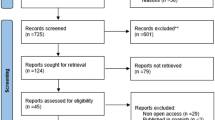Abstract
Background
The management of ventriculitis remains controversial, with no single management strategy that can provide a good outcome. There are few articles describing the brainwashing technique, and most for neonatal intraventricular hemorrhage. This technical note is important because it describes a practical way to perform brainwashing in case of ventriculitis, and it is more feasible compared to endoscopic lavage in developing countries.
Method
We describe in a stepwise fashion the surgical technique of ventricular lavage.
Conclusion
Ventricular lavage is a neglected technique that can help to improve ventricular infection and hemorrhage prognosis.




Similar content being viewed by others
References
Al Menabbawy A, El Refaee E, Soliman MAR, Elborady MA, Katri MA, Fleck S, Schroeder HWS, Zohdi A (2020) Outcome improvement in cerebral ventriculitis after ventricular irrigation: a prospective controlled study. J Neurosurg Pediatr 26(6):682–690
Keen WW (1890) Surgery of the lateral ventricles of the brain. Lancet 136(3498):553–555
Mediratta S, Chari A, Collaborators DOLPHIN-UK (2022) A standardised protocol for neuro-endoscopic lavage for post-haemorrhagic ventricular dilatation: a Delphi consensus approach. Childs Nerv Syst 38(11):2181–2187
Morone PJ, Dewan MC, Zuckerman SL, Tubbs RS, Singer RJ (2020) Craniometrics and ventricular access: a review of Kocher’s, Kaufman’s, Paine’s, Menovksy’s, Tubbs’, Keen’s, Frazier’s, Dandy’s, and Sanchez’s points. Oper Neurosurg (Hagerstown) 18(5):461–469
Parenrengi MA, Ranuh IGMAR, Suryaningtyas W (2023) Is Ventricular lavage the novel treatment for neonatal posthemorrhagic hydrocephalus? A meta analysis. Childs Nerv Syst. https://doi.org/10.1007/s00381-022-05790-3
Pople I, Whitelaw A (2010) Ventricular lavage for post-haemorrhagic hydrocephalus. Cerebrospinal Fluid Res 7(Suppl 1):S49
Author information
Authors and Affiliations
Corresponding author
Ethics declarations
Informed consent
The written informed consent to the procedure was obtained from the mother.
Consent for publication
The mother gave his informed consent for the redaction and publication of the paper and the intraoperative video.
Conflict of interest
The authors declare no competing interests.
Additional information
Publisher's note
Springer Nature remains neutral with regard to jurisdictional claims in published maps and institutional affiliations.
Summary of 10 keys points
1. Brainwashing with 2 ventricular catheters is alternative in purulent ventriculitis and/or difficult-to-treat ventriculitis.
2. This brainwashing with ventricular catheters is more feasible compared to endoscopic lavage in developing countries.
3. In small ventricles, consider not using the technique.
4. The coagulogram exams must be normal to avoid intraventricular bleeding.
5. A ventricular catheter should be implanted on each side. The irrigation with 0.9% saline solution is made through one catheter with simultaneous CSF drainage through the other catheter.
6. From the CSF drainage side, connect an external ventricular drain (EVD) system at 10–15 cm H2O.
7. Use warm 0.9% saline to avoid hypothermia.
8. The CSF should be clear at the end of the procedure. We use approximately 5 L for this purpose.
9. Watch out for intraventricular hemorrhage (CSF is likely to become hemorrhagic during drainage).
10. It is reasonable to perform a postoperative computed tomography (CT) scan to exclude complications.
Supplementary Information
Below is the link to the electronic supplementary material.
Supplementary file1 (WMV 27262 KB)
Rights and permissions
Springer Nature or its licensor (e.g. a society or other partner) holds exclusive rights to this article under a publishing agreement with the author(s) or other rightsholder(s); author self-archiving of the accepted manuscript version of this article is solely governed by the terms of such publishing agreement and applicable law.
About this article
Cite this article
de Sousa Carvalho Dezena, J.E., Gerbelli, C.L.B., Braga, T.K.K. et al. How I do it: brainwashing for purulent ventriculitis. Acta Neurochir 165, 3267–3269 (2023). https://doi.org/10.1007/s00701-023-05607-5
Received:
Accepted:
Published:
Issue Date:
DOI: https://doi.org/10.1007/s00701-023-05607-5




